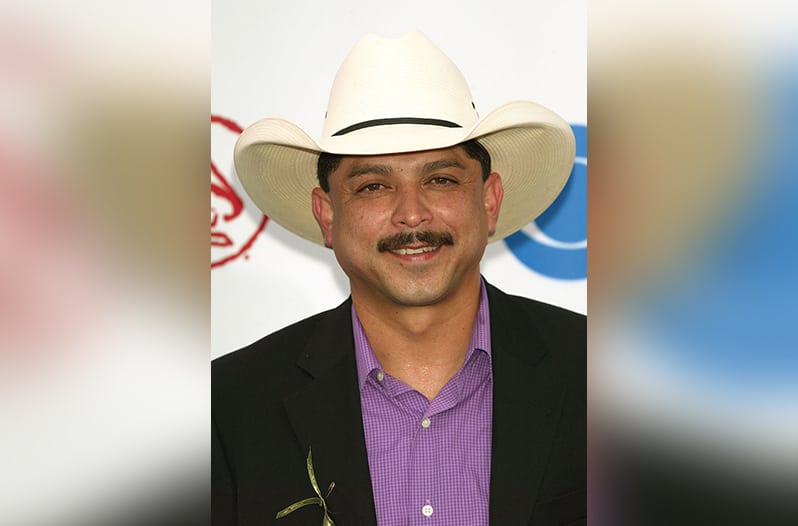It may shock you to read this, but country music is not the only form of American music. It may also shock you that there are plenty of people out there who would like to be country music singers but are shut out by an industry who has a narrowly defined view of country music: straight and white. But country music is, structurally, kissing cousins with many forms of American music, thanks to the predominance of a certain musical structure brought to what's now the United States by enslaved African people. Country, folk, jazz, rock, blues, and R&B are quite similar. The main difference is packaging -- and politics. Coming of age in the 1960s, Emilio Navaira wanted to be a country singer. He got there -- but he had to take the long way around.
Videos by Wide Open Country
The Garth Brooks of Tejano Music
While he is not necessarily a household name in the English-speaking parts of the country, Navaira was known to his fans simply as Emilio. Growing up on the south side of San Antonio, Texas, Emilio was just as influenced by the Tejano music of Little Joe y la Familia, Ramón Ayala, and Pedro Infante as he was by his fellow Texan country crooners Willie Nelson, Bob Wills, and George Strait. Knowing there was no market for a Latinx country star, Navaira focused his efforts on Tejano music, a genre that combines the folk music of European settlers with the music of indigenous peoples from what is now Mexico. It worked -- after graduating from McCollum High School in 1980, Emilio received a music scholarship to Southwestern Texas State University in San Marcos, hoping to follow in his mother's footsteps and become a teacher.
In 1984 Emilio joined the band David Lee Garza y los Musicales as the lead vocalist on their fourth album, Las Canciones Que Te Canto. He returned in the band's later albums Cuantas Veces (1984), Totally Yours (1985), Award Winning (1986), Dejame Quererte (1987), and Tour '88 (1988). Garza y los Musicales were one of the top tejano bands at the time. They had won the Tejano Music Awards' 1983 Most Promising Band of the Year, and won Conjunto Album of the Year in 1984, 1985, 1987, and 1988 -- certainly with Emilio's help.
That was just the start for Emilio's career, however. He struck off on his own in 1989, soon competing with his former band for the Tejano Music Awards' top honors. Emilio charted over ten singles on the Billboard Hot Latin Tracks and won numerous awards -- including multiple Grammy nods. (He would ultimately win one in 2002 for his album, Acuérdate, which won Best Tejano Album. It was also nominated for a Latin Grammy Award.) In 1996, he would release his highest-charting single on any chart: "Por Siempre Unidos," which peaked at No. 7 on Latin Pop Airplay. Emilio's success earned him the nickname "The Garth Brooks of Tejano Music."
The Emilio Navaira of Country Music
Could Emilio translate his success to one of his other loves: country music? In 2005, Emilio would find out. His first English-language album, Life Is Good, was released six months after Selena's death. The tragedy brought Tejano music to national attention. As such, the album pivoted towards the country music market. The lead single, "It's Not the End of the World," was released in both English and Spanish. It peaked at Number 27 on the country charts, making it a Top 30 country hit. Life Is Good saw some success, debuting at number 12 on the country albums chart. It received a warmer welcome in the Latin music world: in 1996 Navaira took home the Tejano Music Award for Male Entertainer of the Year for the fourth straight time. He also won Male Vocalist of the Year, Vocal Duo of the Year (with his brother Raúl, who had joined him in his first solo venture Rio), Progressive Album of the Year, and Tejano Country Song of the Year. Navaira's star had begun to cool off in the Latin music world. His Nashville crossover sealed the deal; while Navaira would struggle with commercial success, his music continued to win accolades and awards among critics.
"It's Not the End of the World" showcases Navaira's vocals and proves that he deserved his Vocalist of the Year Award. The song finds the narrator post-breakup, slipping out of that catatonic state of denial and taking stock of reality around him. While Navaira bravely claims that he can tough it out, his soaring vocals in the chorus suggest otherwise.
The End of the World
On the morning of March 23, 2008, Emilio's tour bus slammed into traffic barrels on a highway to the southwest of Houston. Emilio, who was driving at the time, flew through the window and was critically injured. Though Emilio recovered, he and his wife, Maria, were involved in a second crash six months later when another car collided with theirs as they waited to turn. The couple were released from the hospital the following day. However, Emilio's health never fully returned. Eight years later, in May 2016, Emilio was found by his wife at their New Braunfels, Texas home dead of natural causes. The Tejano legend was 53.




